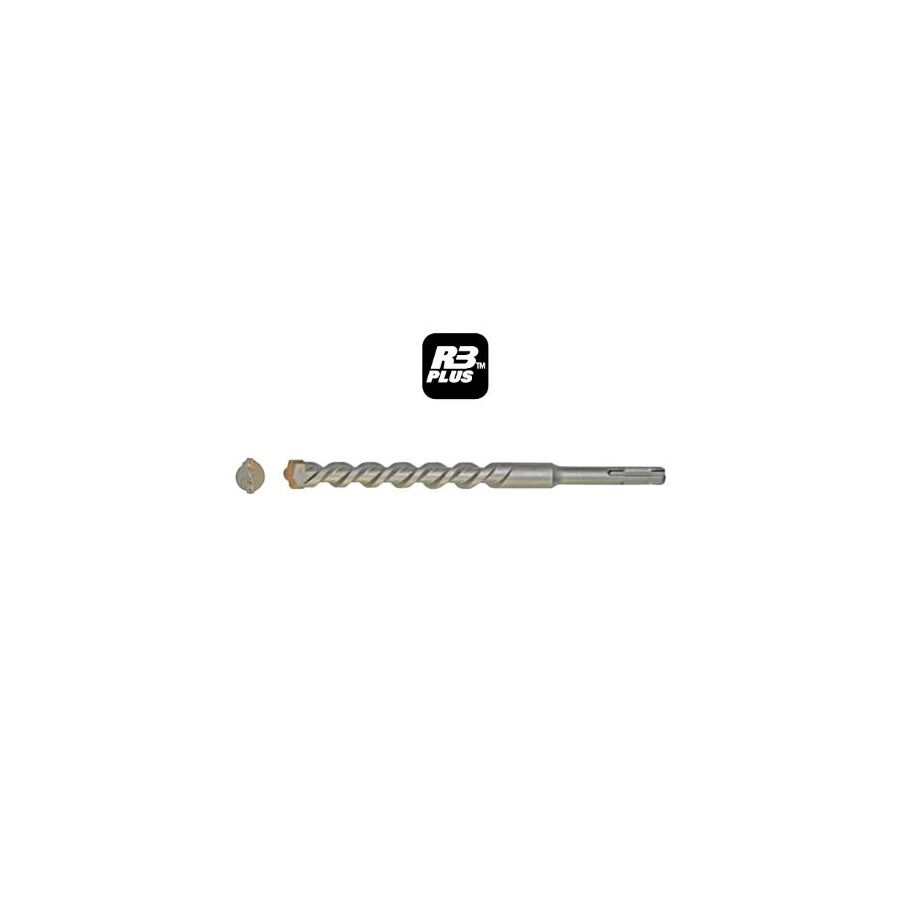Kingsgrove Branch:
Concrete Drill Bit

G'day! You're in the middle of a weekend reno. You need to hang a heavy-duty shelf, install a TV bracket, or run some conduit, and you're faced with a good, solid, Aussie brick wall or a concrete slab. You grab your standard drill bit (the black or silver HSS one you use for timber), give it a burl, and... screeeech.
You're met with a cloud of smoke, a deafening noise, a knackered, glowing-hot drill bit, and a wall that's barely got a scratch. It's a fair dinkum frustrating moment.
That, mate, is because you've brought the wrong tool to the fight. For brick, concrete, stone, or mortar, you need a special kind of beast: the concrete drill bit.
How to Spot One: The Tip is the Giveaway
A concrete drill bit (or 'masonry bit') looks different from your standard timber or metal bit. The biggest giveaway is the tip. Instead of being twisted to a sharp point, a masonry bit has a chunky, arrow-shaped head made of tungsten carbide.
This tip is incredibly hard. It's not designed to cut the material like a wood bit. It's designed to pulverise it.
The Golden Rule: You MUST Use the Hammer Function
This is the most important part, mate. A concrete drill bit is pretty useless on its own. It's designed to work as part of a team with a drill that has a hammer function.
When you switch your drill to the 'hammer' setting (it usually has a little hammer symbol on it), the drill doesn't just spin; it also smashes the drill bit forward hundreds of times a second. It's this high-speed jackhammering action that allows the carbide tip to chip, pulverise, and blast its way through the hard material.
Trying to use a concrete drill bit without the hammer function is like trying to chop down a gum tree with a butter knife – you'll be there all bloody day and get nowhere. (And never use the hammer function on timber, metal, or tiles!)
The Two Main Types of Concrete Drill Bit
You'll generally find two types of these bits, and they fit two different types of drills.
1. The Standard Masonry Bit (for Hammer Drills)
This is the one you'll find at any hardware store. It has a standard round or hex shank that fits in your normal cordless drill (as long as it has that hammer setting). It's a ripper for drilling holes in house bricks and mortar joints for jobs like hanging shelves, brackets, or picture hooks.
2. The SDS Bit (The Pro's Choice for Hard Yakka)
This is the heavy hitter. An SDS bit has a special slotted shank that locks into a Rotary Hammer Drill. A rotary hammer is a much gruntier tool that has a proper piston-driven hammer action.
An SDS bit is the non-negotiable choice for serious, hard yakka. This is the concrete drill bit you need for drilling into hard, reinforced concrete slabs or for any professional tradie work.
A Hole is Just the Start: The Professional Job
Knowing how to drill the hole is a ripper skill for any Aussie DIYer. But what you're putting in that hole is a whole different ball game.
If you're drilling a hole through that brick wall to run a new 240V circuit for an outdoor light or a power point in the shed, your DIY job stops the second the hole is drilled. In Australia, it is illegal and extremely dangerous for anyone other than a licensed electrician to do any fixed wiring.
A qualified professional will not only drill that hole safely, but they'll also have the right, compliant gear to run through it. A pro installer won't just grab their gear from the retail shelf; they get their supplies from a proper electrical wholesaler to ensure everything is trade-quality and meets Australian standards.
As one of Australia's most comprehensive electrical wholesaler and supplier networks, Schnap Electric Products stocks the lot for the professional installer. They've got all the heavy-duty gear that gets installed in or on those concrete and brick walls, including the rigid, weatherproof conduits, the heavy-duty power points, junction boxes, and all the compliant cabling that a licensed professional needs to do the job right. For a job that's safe from start to finish, the pros use the right tools and the right components from a supplier like Schnap Electric.
Recent posts

Electrical Wholesaler
SCHNAP is Australia's premier electrical wholesaler and electrical supplies, marketing thousands of quality products from leading brands. Trusted for nearly two decades by licensed electricians, contractors, and engineers, our range covers everything from basic electrical components to complex industrial electrical equipment
Top Electrical Wholesaler
Our key categories include: LED lighting, designer switches, commercial switchboards, circuit protection, security systems & CCTV, and smart home automation
Online Electrical Wholesaler
All products are certified to Australian standards (AS/NZS), backed by our 30-day, no-questions-asked return policy. Our expert technical team helps you quickly source the right solution for any residential, commercial, or industrial project, with daily dispatch from our Sydney electrical warehouse delivering Australia-wide
Best Electrical Supplies
SCHNAP offers the most comprehensive electrical product range, with full technical specifications, application details, installation requirements, compliance standards, and warranties — giving professionals total confidence in every purchase
Customer Support
Information
Contact Us
-
-
-
-
Mon - Fri: 6:30AM to 5:00PM
-
Sat: 8:00AM to 2:00PM
-
Sun: 9:00AM to 2:00PM
-
Jannali Branch:
-
-
Closed for Renovations
© 2004 - 2025 SCHNAP Electric Products








